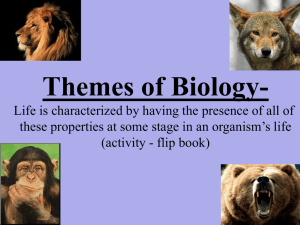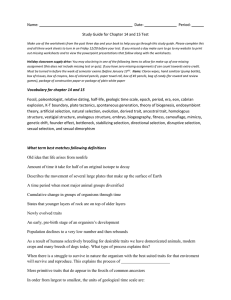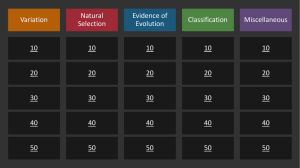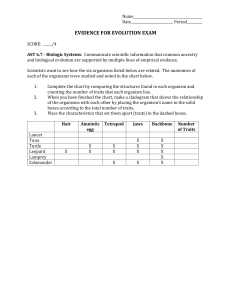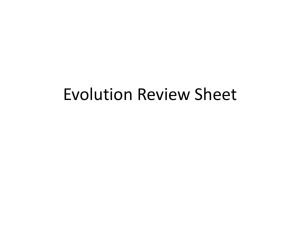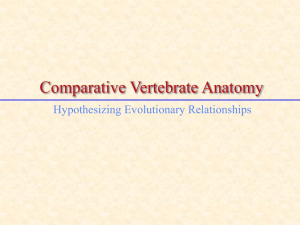Biodiversity and Change Review LT 1-3 continents) have changed over time.
advertisement
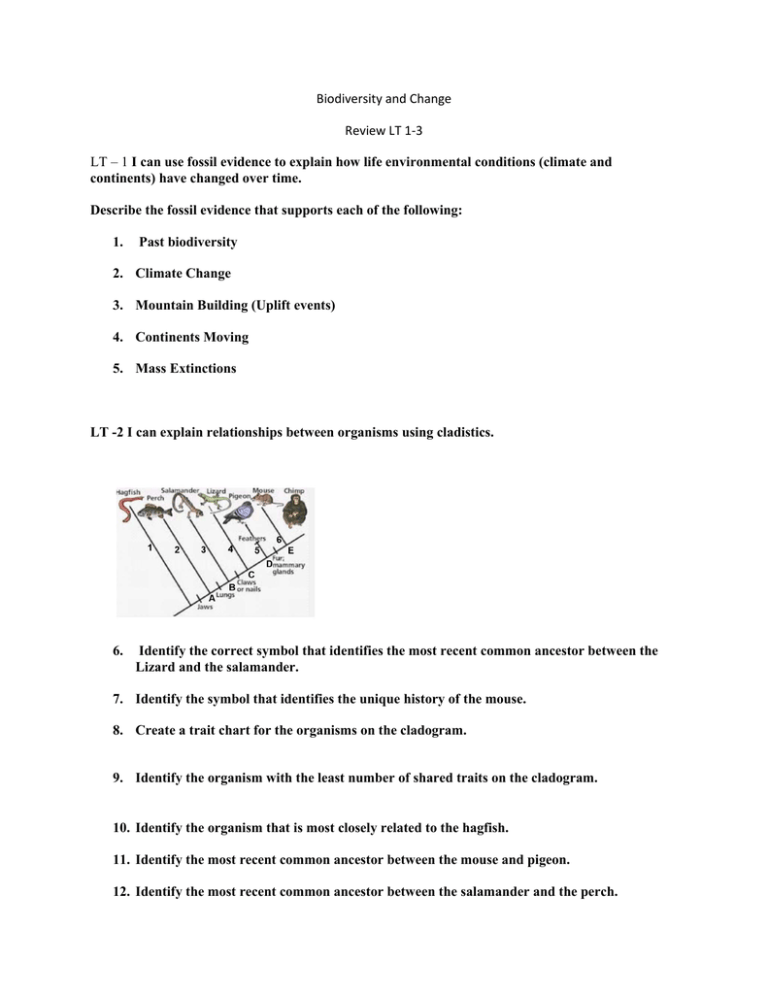
Biodiversity and Change Review LT 1-3 LT – 1 I can use fossil evidence to explain how life environmental conditions (climate and continents) have changed over time. Describe the fossil evidence that supports each of the following: 1. Past biodiversity 2. Climate Change 3. Mountain Building (Uplift events) 4. Continents Moving 5. Mass Extinctions LT -2 I can explain relationships between organisms using cladistics. 6. Identify the correct symbol that identifies the most recent common ancestor between the Lizard and the salamander. 7. Identify the symbol that identifies the unique history of the mouse. 8. Create a trait chart for the organisms on the cladogram. 9. Identify the organism with the least number of shared traits on the cladogram. 10. Identify the organism that is most closely related to the hagfish. 11. Identify the most recent common ancestor between the mouse and pigeon. 12. Identify the most recent common ancestor between the salamander and the perch. Organism Jaws Fur 4 limbs backbone amniotic egg 13. Fill in the trait chart With a + or – for each trait. chimp newt lamprey bear sunfish Lizard 14. Make a Venn Diagram using the organisms and traits above. 15. Fill in the cladogram using the organisms and traits from above. 16. Which of the following is NOT true A. Cladograms can be used to show how organisms are related. B. Extinct organisms are related to modern organisms. C. Humans evolved from monkeys. D. Plants, fungi, and animals are all related. LT-3 I can explain how populations/traits change over time using natural selection. Starting Population Generation 1 Generation 2 Generation 3 Big Extra Feathers Big No Feathers Small No Feathers 10 Small Extra Feathers 10 10 4 1 0 6 3 0 5 5 2 25 31 38 10 17. Predict the environment that caused the changes in population above. 17. Explain how the population of the “small no extra feathers” penguins changed using natural selection. 18. Explain the phrase, “survival of the fittest” 19. Explain where the variation of traits comes from in a population of mice. Also, explain what determines which of those traits will be favorable or unfavorable. 20. In the activity, Naturally Selecting Insects, explain how the insect color trait was both a favorable and unfavorable trait.
